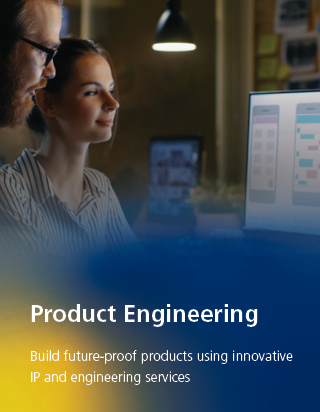Enhance Job Precision with Tailored Engineering Support: Topographical Surveying, Construction Studies, and More
Enhance Job Precision with Tailored Engineering Support: Topographical Surveying, Construction Studies, and More
Blog Article
Taking Full Advantage Of Source Appropriation With Strategic Surveying Practices
In the realm of tactical source allowance, the method of checking stands as a critical device for organizations intending to optimize their performance and influence. By methodically gathering insights and information, calculated surveying techniques supply a roadmap for educated decision-making and source circulation. With the lens of stakeholder involvement, these studies supply a method to take advantage of the diverse viewpoints and requires that form an organization's landscape. The true power of tactical evaluating exists not simply in information collection, yet in the capacity to transform this info into workable methods that thrust a company towards its goals. Via this lens, we start to unravel the detailed interaction in between surveying methods and source optimization, establishing the phase for a deeper exploration of the methods and strategies that underpin this critical procedure.
Importance of Strategic Checking Practices
Strategic evaluating methods play a crucial duty in identifying the effective allowance of resources within organizations. By conducting tactical studies, companies can collect useful data and insights that aid in making notified decisions concerning the allowance of sources such as workforce, time, and budget plan. These practices provide a structured approach to recognizing the current state of the company, identifying locations for renovation, and straightening resources with tactical goals.
One key significance of tactical surveying methods is that they assist companies prioritize their efforts based upon real-time comments from stakeholders. This makes certain that resources are routed in the direction of jobs or activities that have the greatest effect on achieving organizational purposes. In addition, critical surveys make it possible for companies to adapt to altering market conditions, consumer preferences, and internal abilities by constantly evaluating and monitoring resource appropriation strategies.
Event Insights From Stakeholders
Integrating responses from stakeholders is essential for companies carrying out strategic surveying techniques to efficiently allocate sources and drive decision-making processes. Stakeholders, including employees, customers, distributors, and community participants, hold useful understandings that can dramatically influence the success of critical initiatives. measured building surveying. Engaging with stakeholders via studies, interviews, focus teams, and comments sessions enables companies to acquire a deeper understanding of their problems, requirements, and preferences
By gathering insights from stakeholders, companies can determine key locations for improvement, prioritize source allocation based on real requirements, and align critical goals with stakeholder assumptions. Moreover, entailing stakeholders in the decision-making procedure cultivates a feeling of possession and commitment, leading to increased buy-in and assistance for calculated initiatives.
Furthermore, stakeholders often use distinct viewpoints and ingenious ideas that may not have been thought about inside. By proactively paying attention to and including stakeholder feedback, organizations can improve their tactical surveying methods, make even more educated choices, and eventually attain much better results.
Utilizing Data-Driven Approaches
Making use of data-driven approaches is paramount for organizations seeking to boost the effectiveness of their source allotment approaches and decision-making procedures. By leveraging data analytics and progressed technologies, companies can remove useful insights to enhance source allocation, identify patterns, and make notified choices. Data-driven approaches make it possible for companies to allocate resources based on empirical proof rather than instinct, causing extra effective and reliable results.

Moreover, companies can use anticipating analytics to forecast future source needs and assign resources proactively. setting out engineer services. By leveraging historic data and pattern analysis, organizations can anticipate need changes and readjust their source allowance methods appropriately. On the whole, accepting data-driven techniques empowers companies to make knowledgeable decisions that make the most of resource allocation performance and drive lasting growth
Identifying Locations for Enhancement
Identifying areas for improvement is a critical action in the process of making the most of source allotment. By acknowledging where traffic jams or inefficiencies exist within the organization, decision-makers can route resources towards addressing these details areas.
One reliable method for identifying areas for improvement is carrying out routine performance analyses throughout different departments or features. Through these analyses, companies can gather useful understandings right into areas that need attention or restructuring. In addition, looking for responses from employees at all levels of the company can provide a special perspective on prospective areas for enhancement.
Additionally, using devices such as procedure mapping, SWOT analysis, and benchmarking can help in identifying areas for enhancement by highlighting toughness, weaknesses, possibilities, and risks within the company. By systematically taking a look at these elements, companies can establish an extensive understanding of where sources must be assigned to drive efficiency and efficiency.
Practical Tips for Implementation

Conclusion
Finally, tactical surveying techniques play an essential role in making best use of resource allowance by collecting understandings from stakeholders, making use of data-driven approaches, and identifying locations for enhancement. Applying sensible tips for reliable surveying can lead to more enlightened decision-making and enhanced source allotment approaches. By focusing on strategic checking methods, organizations can make certain that resources are allocated efficiently and effectively to fulfill their objectives and objectives.
In the his comment is here realm of critical source allowance, the practice of checking stands as a crucial tool for organizations intending to optimize their performance and influence.Strategic evaluating practices play an essential function in establishing the efficient appropriation of sources within organizations.Integrating responses from stakeholders is crucial for companies applying strategic surveying practices to properly allot sources and drive decision-making procedures.Furthermore, companies can use anticipating analytics to forecast future resource needs and allocate resources proactively. By prioritizing tactical surveying techniques, companies can make certain that resources are designated efficiently and effectively to meet their goals and objectives.
Report this page